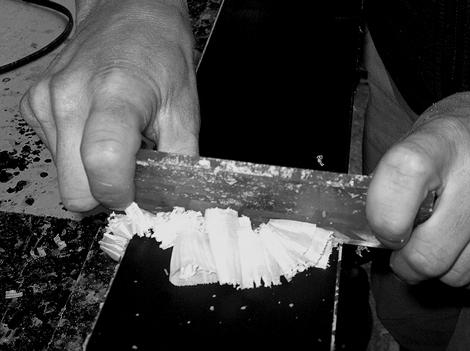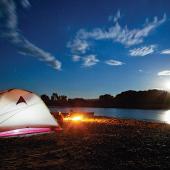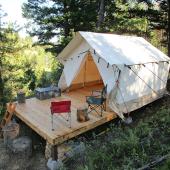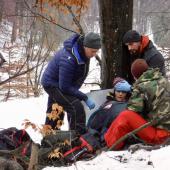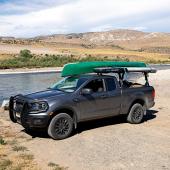Ski Waxing Basics
Connoisseurs can take ski waxing to an elevated art form; here we’ll just cover the basics. Before you wax you have a few simple equipment choices: ski support or vice, waxing iron, and lastly some scrapers and brushes. Most people prefer to skip right over the ski support and go straight for the waxing iron—to keep yourself out of waxing purgatory I suggest you follow the ski-vice recommendation. In choosing an iron, bypass your urge to use the recycled clothes iron hidden in your closet—or at least choose the one without steam-holes and one that’s non-Teflon based. (A ‘real’ wax iron may seem expensive but they hold their heat better and more evenly.)
The process is a fairly simple three-step endeavor: prepare, apply, and remove. First make sure that you have a clean base state; you might want to use a brass brush from tip to tail before you apply the wax. (The general rule of thumb on waxes is the colder the snow the harder the wax and the warmer the snow the softer the wax.) Next touch the bar of wax to the hot iron and drip the melting wax onto the ski. Once the entire base is covered use the iron to spread the wax evenly. Be careful not to overheat the ski—if your iron’s smoking it’s too hot (and mildly toxic). Let your newly waxed skis cool for a half-hour or so before you start the scraping process. Keep your thumbs on the bottom of the scraper as you move from the tip to the tail.
“Scraping,” Rob from Bangtail tells me, “is removal of the wax at its simplest.” He added that you could get crazy complex with brushing (which for some follows scraping), but just go back to that waxing mantra—“I just need to get wax on my skis.” By the way, waxing should be done at room temperature—let your skis dry off and warm up from yesterday’s outing before you begin. Lastly, don’t ski on warm wax—let your skis acclimate to the cold by placing them face down on the snow while you get the rest of your gear on.
If you’re training, one pass is probably enough, but if you’ve decided give racing a try you might want to repeat the process two or three times. Classic skiers will want to pay attention to both the kick and glide zone—the kick zone is directly under your foot and here you want to use a stickier wax.
Now that you know the basics you have no excuse. Happy trails.


